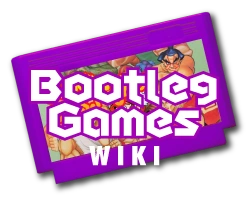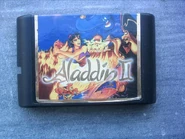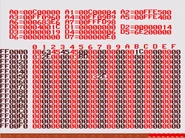- This article is about the Mega Drive game. For game with a similar title see Aladdin II (Famicom),
Aladdin II is an unlicensed Mega Drive port of the SNES version of Disney's Aladdin, originally made by Capcom in 1993. It might have been developed by ex-workers from Chuanpu Technology and was likely published by X Boy. This port can be considered the "opposite" of Aladdin 2000, a port of Virgin's Aladdin for the SNES.
Overview[]
The game is a port of the SNES version. It features all the stages from the original game, although with different color palettes. The game only has some predefined enemies and they have the same color palette in every stage.
Unlike the legit SNES version, the Mega Drive port lacks the minigames that appear once you complete each stage. The game still shows a Continue screen once the player loses all their lives, which has been very well recreated, but lacks Aladdin's monkey Abu (who doesn't appear outside of cutscenes)
The sound effects are from the original game, but slowed down and compressed, and the music seems to be remade from the original.
Similarities to other ex-Chuanpu platformers[]
Similar to what happens in other games arcade supposedly developed by ex-Chuanpu developers, the game has some noticeable features and glitches:
- Due to the game programming, once you defeat an enemy and refresh the screen, it will appear again.
- When you land on an enemy, you can jump higher.
Trivia[]
- Hercules II and Lion King 3 may have reused assets from Aladdin II; they both appear to be connected to X Boy and contain enemies and level graphics from the SNES Aladdin.
- Looking at the game headers of Aladdin II and the two Pocket Monsters games for the Sega Mega Drive, we can notice they're almost identical. This, along with some research about the cartridge chip IPs, would suggest that they actually share the same engine. In fact, because the jumping ability is glitched in Pocket Monster, but not in Aladdin II, the last would have been published later.
- In-game-arcade there's a debug screen the 2 players can access. The debug screen is easily accessible by pressing A, B, & C, D at the same time. The debug screen is actually a crash handler, which shows the 680k registers and the current stack (which appears to be set to the very first address in RAM), you can navigate by pressing up or down in the D-Pad as well. You can press Start to exit the debug screen. The color palette of several sprites become corrupted as soon as you turn it on, but change back to normal when the character dies or after you beat the current stage.
- The theme from the first level is not based on the music from the SNES version; however, it does closely resemble the Western Desert theme from Barver Battle Saga: Tai Kong Zhan Shi, further suggesting a Chuanpu connection.



